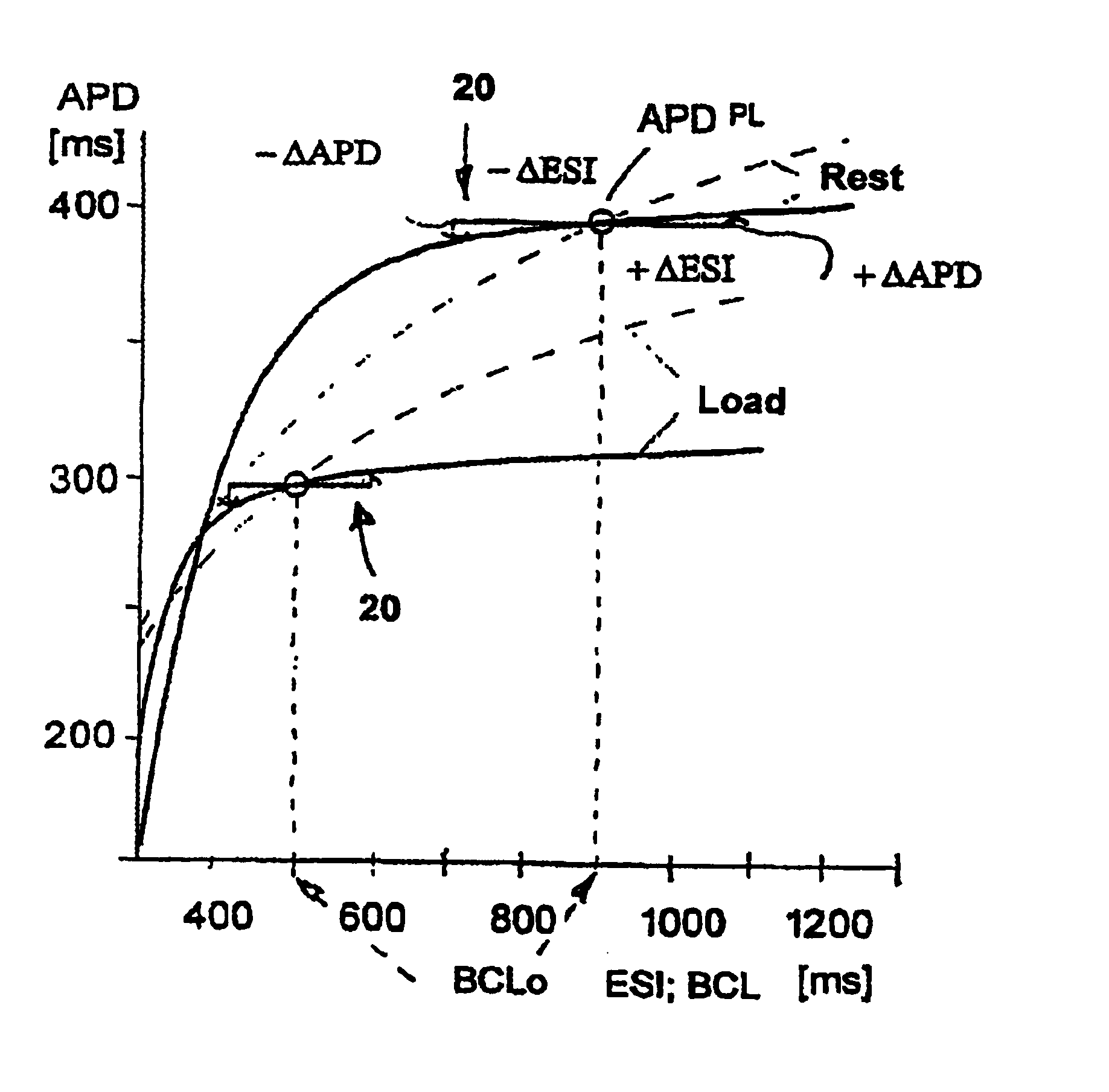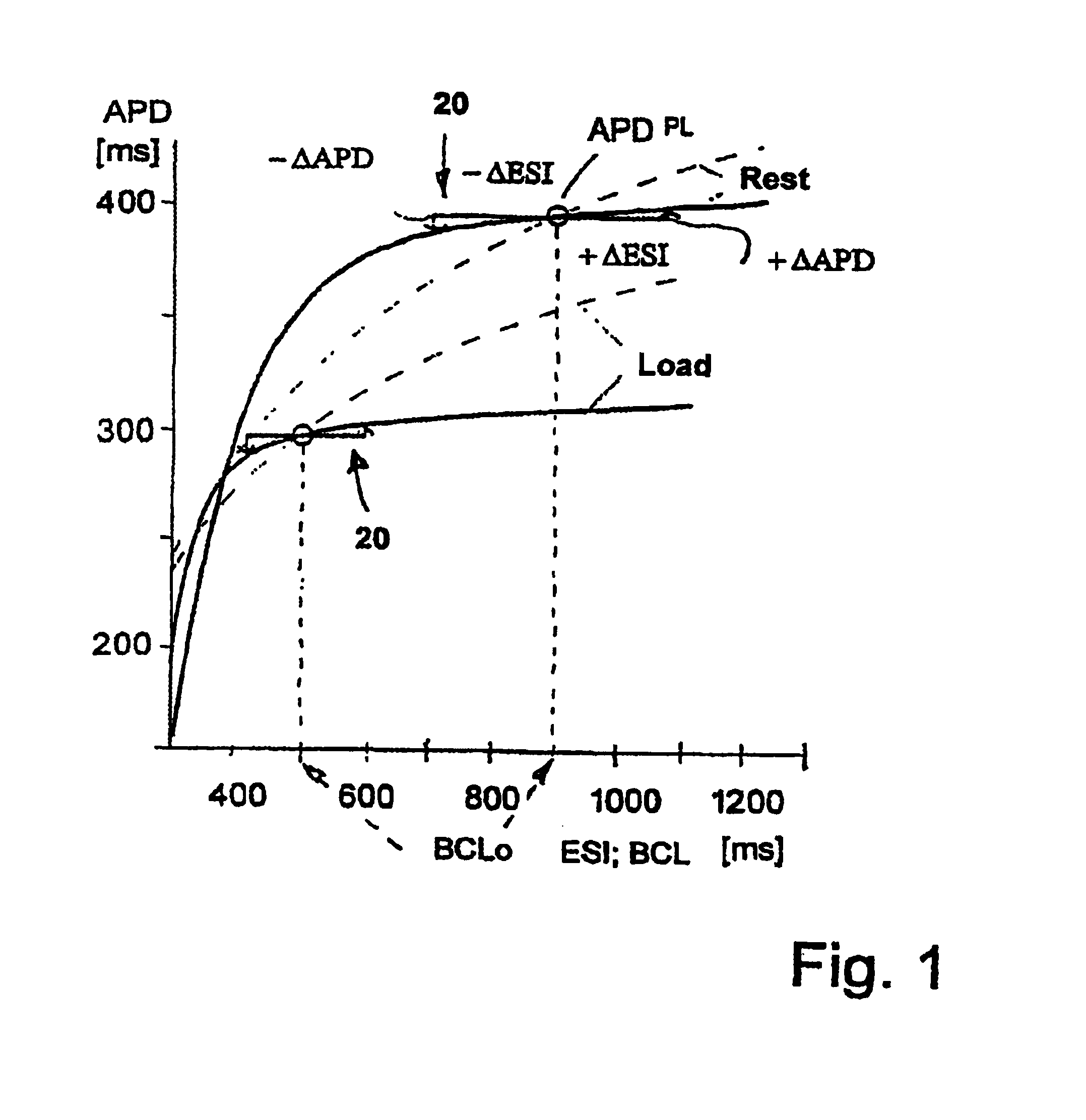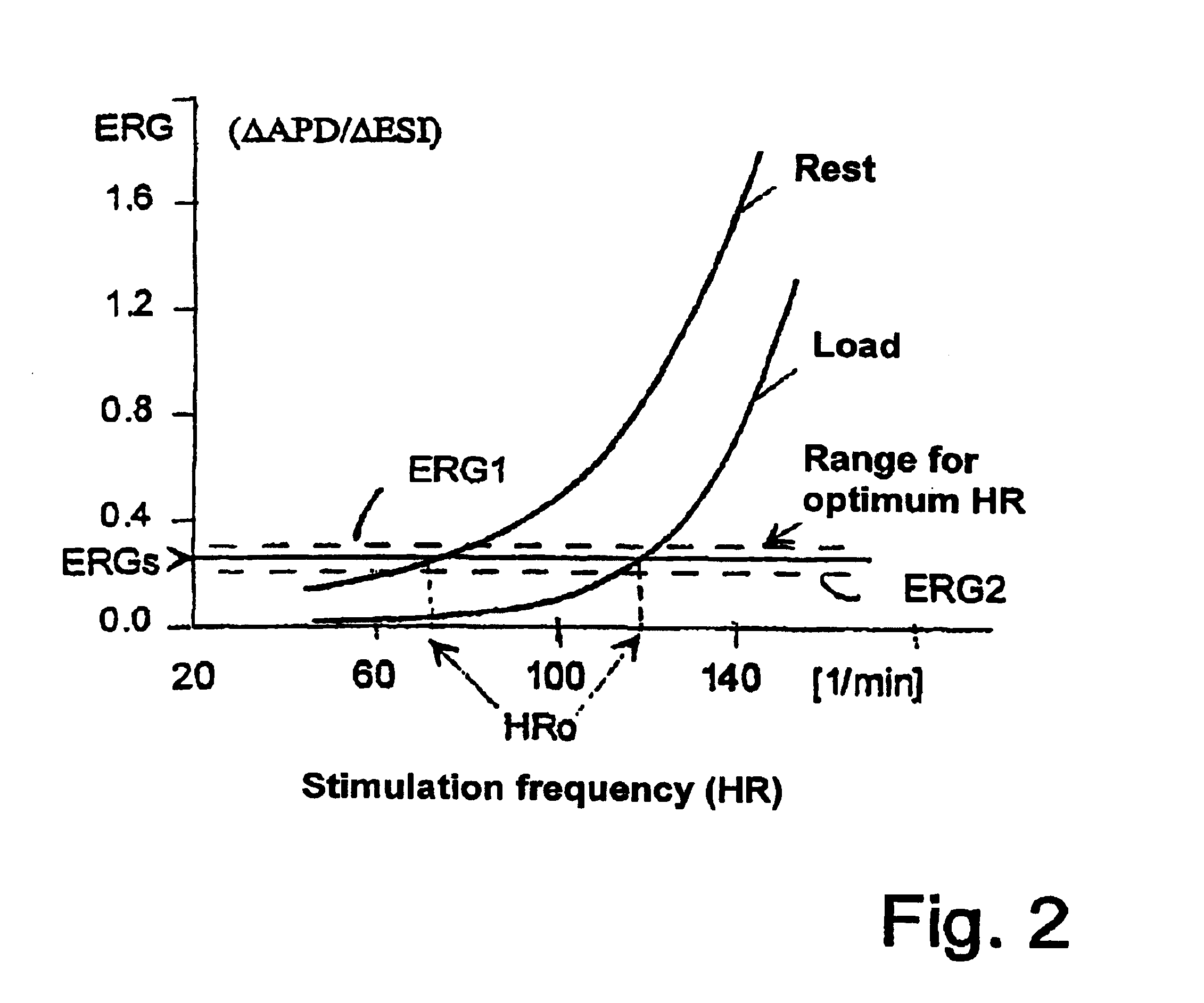Cardiac pacemaker with adjustable stimulation interval
a technology of a pacemaker and an adjustable stimulation interval, which is applied in the field of cardiac pacemakers, can solve the problems of stim-t interval dependence, shortening to a considerable degree, and not shortening, and achieves the effect of quick and accurate regulation and avoiding overload by too high stimulation frequency
- Summary
- Abstract
- Description
- Claims
- Application Information
AI Technical Summary
Benefits of technology
Problems solved by technology
Method used
Image
Examples
Embodiment Construction
[0027]The dependence of the duration of,the action potential AP of the myocardium as a function parameter of the duration of the diastole td is designated as electric restitution. If this is spontaneously changed during a single heart cycle, for example through an extrasystole, then the action potential or its duration changes. The duration of the action potential is defined by the interval between the beginning of the stimulation and the time at which the action potential has sunk by 90%, and it decreases if the time interval between two successive stimulation pulses becomes smaller. Here a distinction is to be made between the APD change after an extrasystolic stimulation interval and the APD change after a change in the average or basic heart frequency (HR =1 BCL) according to prior art.
[0028]This alteration behavior after an extrasystolic stimulation interval can be described by a double exponential function which is referred to as the electric restitution curve ER.
[0029]The ele...
PUM
 Login to View More
Login to View More Abstract
Description
Claims
Application Information
 Login to View More
Login to View More - R&D
- Intellectual Property
- Life Sciences
- Materials
- Tech Scout
- Unparalleled Data Quality
- Higher Quality Content
- 60% Fewer Hallucinations
Browse by: Latest US Patents, China's latest patents, Technical Efficacy Thesaurus, Application Domain, Technology Topic, Popular Technical Reports.
© 2025 PatSnap. All rights reserved.Legal|Privacy policy|Modern Slavery Act Transparency Statement|Sitemap|About US| Contact US: help@patsnap.com



